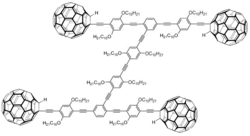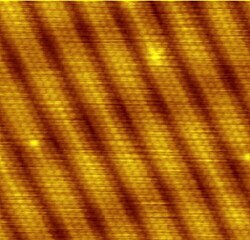History

The idea for the race was formulated by scientists Christian Joachim and Gwénaël Rapenne in Toulouse, France in January 2013 in the ACS Nano journal. [1] A call for applications was launched to give the participating teams time to prepare appropriate nanocars. [1] The race is officially announced by the French National Centre for Scientific Research (CNRS) in November 2015 in Toulouse during Futurapolis1. [2] On this occasion, five teams presented their prototype projects on November 27, 2015. [3]
The first race in the world of this type, [4] between four vehicles, started on the 28 April 2017 [5] at the CEMES-CNRS in Toulouse [6] and lasted 36 hours. The Toulouse organizers also agreed on the competition of two more vehicles, which will then be remotely controlled via Internet from the CEMES-CNRS race room on the microscope of their own laboratory. These relates to the vehicles from Ohio and Graz-Rice.
